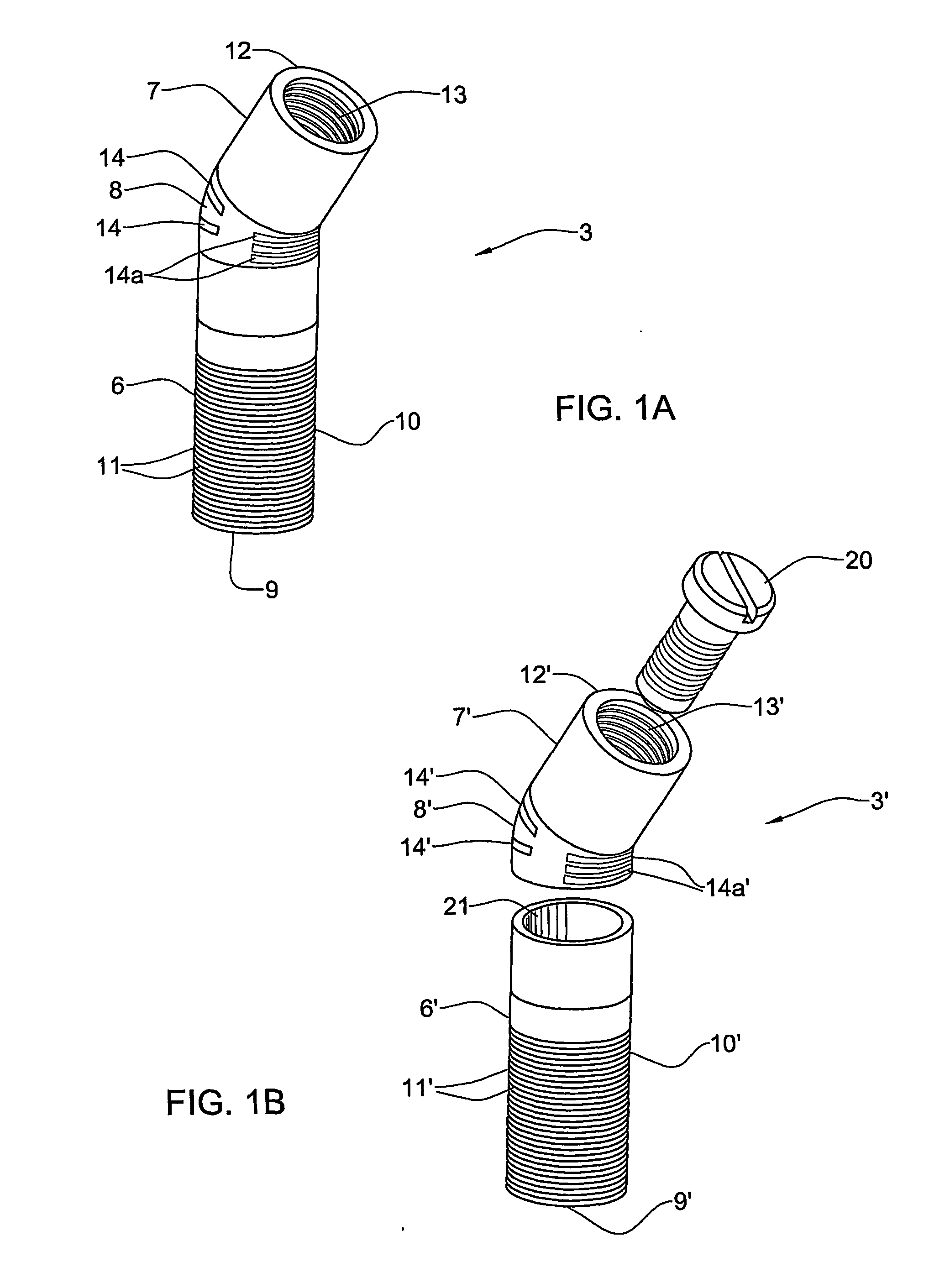Implant having integral flexible abutment portion and method for use thereof
a flexible and abutment technology, applied in the field of bone implants, can solve the problems of limiting the usefulness of root-form implants, laborious and costly, and affecting so as to improve the ease and convenience of a plurality of different surgeries, the effect of increasing the success rate and efficiency of said surgeries
- Summary
- Abstract
- Description
- Claims
- Application Information
AI Technical Summary
Benefits of technology
Problems solved by technology
Method used
Image
Examples
Embodiment Construction
[0064] It is appreciated that the detailed description provided is meant only to illustrate certain preferred embodiments of the present invention. It is in no way meant to limit the scope of the invention, as set out in the claims.
[0065] While the abutment, implant and method of the present invention will be described in detail with preferred embodiments that are specific to dental implants, it is to be appreciated that the present invention can be useful for any bone surgery, in orthopedics, bone reconstruction, the correction of birth defects, facial trauma, hip, knee, or shoulder replacement, etc.
[0066] Referring to FIG. 1A, FIG. 1B in combination with FIG. 2. In FIG. 1A the dental implant (3) has abutment portion (7), which in the figure is integral with the dental implant. FIG. 1B shows a dental implant (3′) which has two parts that can be assembled together (i.e. are not a prior integral): a bone portion (6′) and abutment portion (7′). The two parts can be assembled by scre...
PUM
 Login to View More
Login to View More Abstract
Description
Claims
Application Information
 Login to View More
Login to View More - R&D
- Intellectual Property
- Life Sciences
- Materials
- Tech Scout
- Unparalleled Data Quality
- Higher Quality Content
- 60% Fewer Hallucinations
Browse by: Latest US Patents, China's latest patents, Technical Efficacy Thesaurus, Application Domain, Technology Topic, Popular Technical Reports.
© 2025 PatSnap. All rights reserved.Legal|Privacy policy|Modern Slavery Act Transparency Statement|Sitemap|About US| Contact US: help@patsnap.com



